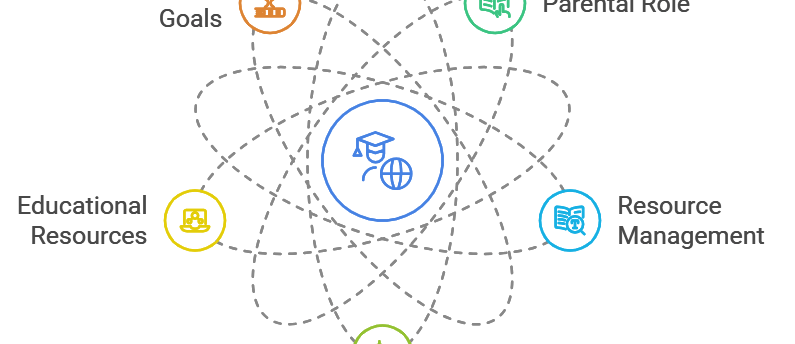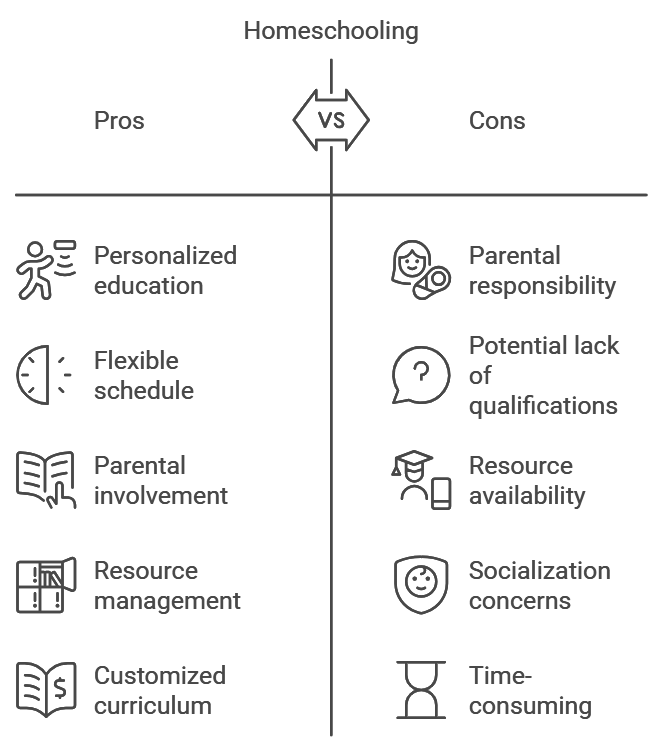What is home schooling?
Homeschooling is an educational approach where parents take on the primary responsibility of their child’s education, usually outside of the traditional school environment. Rather than teaching every subject themselves, homeschooling parents typically adopt the role of a school administrator, creating a learning plan, setting goals, and finding appropriate resources. This approach allows for a customized education that aligns with the family's values and the child’s unique strengths, interests, and needs.
HOMESCHOOLING FAQ
LIBOIC
11/20/20245 min read


What is Homeschooling?
Homeschooling is a form of education where parents choose to take on the responsibility of their child’s learning journey outside the traditional school setting. A common misconception about homeschooling is that parents must personally teach every subject, even though they may feel unqualified to do so. However, in homeschooling, parents often act more like school administrators rather than full-time instructors for every subject. Their role involves managing and curating the best resources, teachers, and materials to provide their child with a comprehensive and high-quality education.
In traditional schools, administrators strive to hire qualified teachers for each subject, select the most effective learning materials, and design a curriculum aligned with the school’s mission and vision. This vision encompasses what the school sees as success for its students, guiding the development of goals, resource selection, and curriculum building.
Similarly, in a homeschooling setting, parents establish a clear vision for their child’s education. They define what success means for their family and where they hope to see their child in the future. With this vision in mind, parents search for the best possible educational resources, whether online or locally, and create a tailored curriculum to help their child reach these goals. For example, they may seek specialized courses or instructors for subjects like math, Arabic, Quran, hadith, English, and science. Parents then integrate these resources into a customized curriculum that aligns with their child’s needs, learning pace, and aspirations, ensuring a well-rounded and purposeful education.
In this way, homeschooling becomes a flexible, personalized educational path, with parents acting as guides who oversee their child’s academic journey, connecting them with the right teachers and materials to support their growth and success.


Pros and Cons of Homeschooling
Like any educational approach, homeschooling has its advantages and challenges. Here’s an overview and tips on addressing common cons:
Pros
Personalized Learning: Homeschooling lets you tailor education to your child’s strengths, interests, and learning style.
Flexible Schedule: Families have the freedom to create a schedule that suits them, allowing for more family time, travel, and real-world learning experiences.
Focus on Core Values: Homeschooling enables parents to instill core values and ethics, whether religious, moral, or personal, without external influences.
Enhanced Bonding: Homeschooling can lead to closer family bonds, as parents are deeply involved in their child’s learning journey.
Cons and Solutions
Limited Socialization: A lack of regular interaction with peers can be a concern.
Solution: Involve your child in community activities, homeschool co-ops, sports teams, and extracurricular classes. This will help them build social skills and friendships.
High Parental Involvement: Homeschooling requires a significant commitment from parents, which can be overwhelming.
Solution: Create a balanced schedule for yourself and consider hiring part-time tutors for challenging subjects. Collaborating with other homeschooling families can also ease the workload.
Resource Costs: While homeschooling can be cost-effective, purchasing quality resources and hiring teachers can add up.
Solution: Explore free resources, online libraries, and open-source curriculum tools. Many communities also offer grants or discounts to homeschooling families, which can help reduce expenses.
Difficulty Finding Specialized Teachers: Finding qualified instructors for niche subjects can be a challenge.
Solution: Online platforms like Outschool or EdX offer specialized courses taught by experts. You can also reach out to local college students or professionals willing to teach part-time.
Conclusion
Homeschooling can be a rewarding educational journey that provides personalized learning experiences, flexibility, and alignment with family values. By acting as a guide and resource manager, parents can build a tailored education plan that helps their child succeed academically and personally. Though homeschooling has its challenges, solutions like community involvement, online resources, and effective planning can make the journey smoother. With thoughtful organization and a clear vision, homeschooling can become a fulfilling and effective alternative to traditional schooling, leading to lifelong learning and growth.
Step 1: How to Find Resources for Homeschooling
The success of homeschooling largely depends on the quality of the resources parents gather. Here are some avenues to explore:
Online Courses: Platforms like Khan Academy, Brilliant, Coursera, and Udemy offer courses across a wide range of subjects and levels. They are often created by experts in the field and provide interactive and structured content.
Local Homeschool Co-ops: These are community groups where homeschool families come together to share resources, teaching duties, and learning experiences. Many co-ops also invite guest instructors for specialized subjects like science, arts, and languages.
Tutoring Services: For more tailored assistance, consider hiring a tutor for subjects that require in-depth understanding, such as math, languages, or sciences. Services like Wyzant or local tutoring centers can connect you with qualified educators.
Educational Websites and Apps: Websites like Quizlet, Brainscape, and Duolingo offer a variety of interactive learning tools and resources. Many homeschooling parents also use YouTube, where they can find educational channels on virtually every subject.
Libraries and Local Museums: Many libraries and museums offer educational programs, workshops, and events that align with educational standards and provide hands-on learning experiences. Additionally, libraries are invaluable sources for textbooks, fiction, and non-fiction resources.
Step 2: Selecting the Right Teachers
Choosing the right educators for your homeschool program is a crucial part of building a well-rounded curriculum. Here’s how you can find the best teachers for your child:
Check Qualifications and Experience: Look for teachers with expertise in the subject area and experience with homeschooling or alternative education. This will ensure that they understand flexible, self-paced learning.
Consider Teaching Style Compatibility: Every teacher has a unique style, and it’s essential to find someone who can engage and inspire your child. Arrange trial sessions or interviews to see if their approach aligns with your child’s learning style.
Ask for Recommendations and Reviews: If you’re considering online courses or tutoring services, check reviews and ask for recommendations from other homeschooling families. Online forums and homeschooling communities are great places to gather feedback.
Look into Co-ops and Community Teachers: Homeschool co-ops often have skilled teachers for hire, making it easier to find vetted instructors. Local teachers, retired educators, or passionate hobbyists (like artists or scientists) can also be valuable resources.
Step 3: Developing a Curriculum Based on Parental Goals
Homeschooling allows parents to set personalized educational goals for their children. Here’s how to create a curriculum that reflects your vision for your child’s education:
Define Your Educational Vision: Start by deciding on your long-term goals. Are you aiming for academic excellence, spiritual development, life skills, or all of these? Clearly outlining your vision will help you stay focused on what matters most.
Set Clear, Attainable Goals: Break down your vision into short-term and long-term goals. For instance, if you want your child to master advanced mathematics by a certain age, define specific milestones and the necessary resources to reach them.
Choose Appropriate Learning Styles: Decide whether your child benefits more from hands-on learning, visual aids, auditory resources, or reading and writing exercises. Build your curriculum around these preferences to enhance engagement.
Use Curriculum Planning Tools: Many online tools, such as Homeschool Planet or Trello, can help organize lessons, track progress, and manage resources.
Build in Flexibility: Allow room for adjusting the curriculum as your child’s interests and abilities grow. Flexibility is one of homeschooling’s greatest strengths, allowing for a learning experience that evolves over time.
